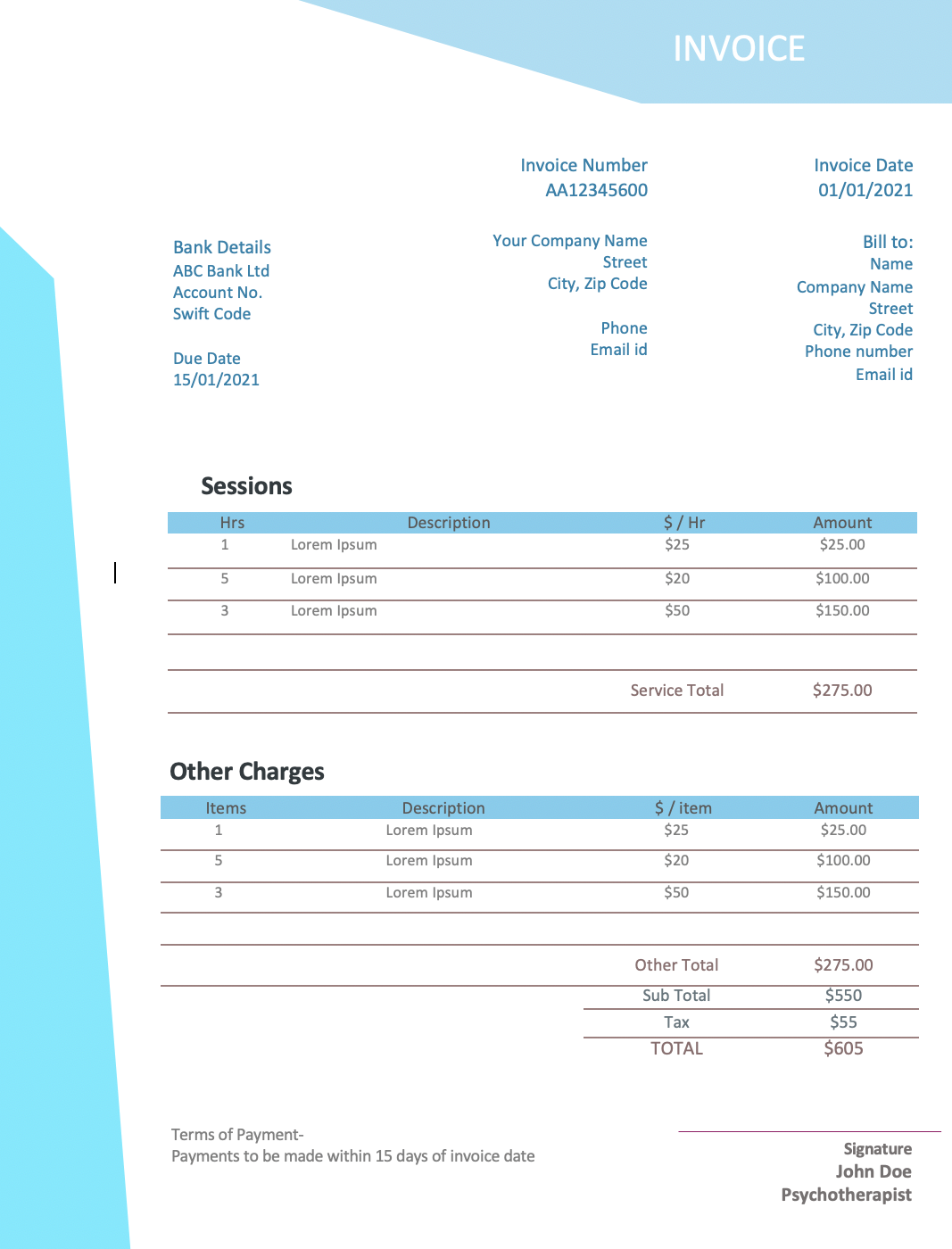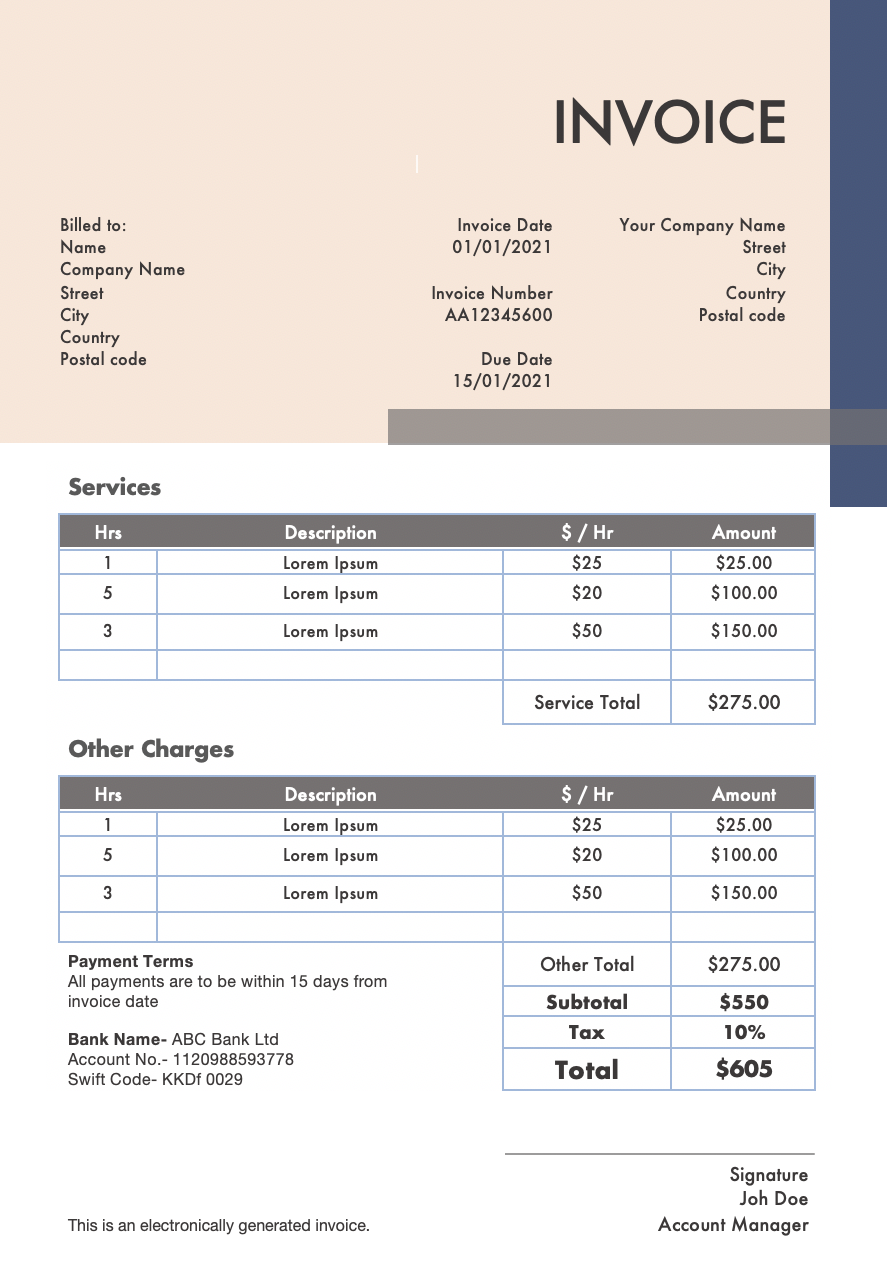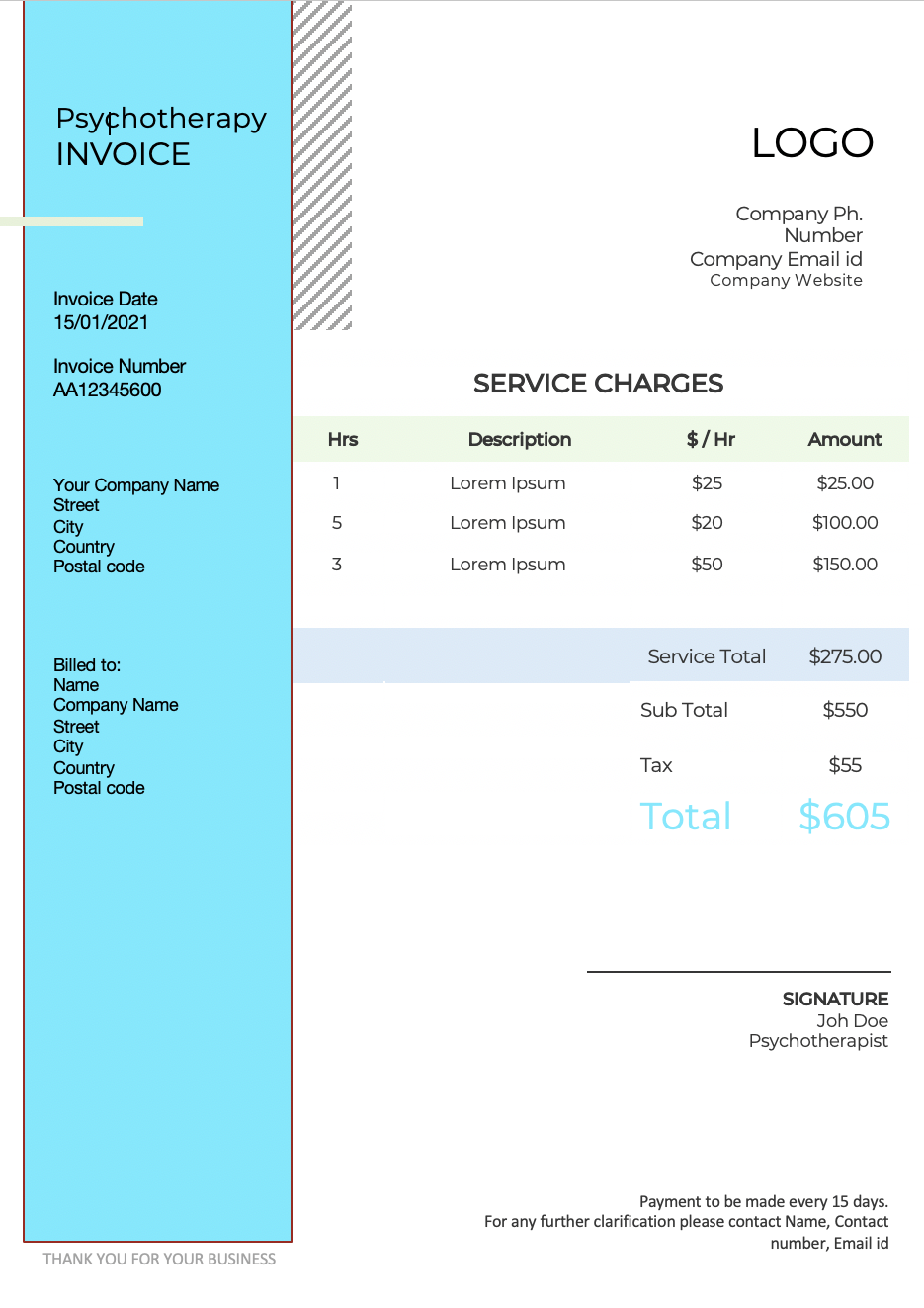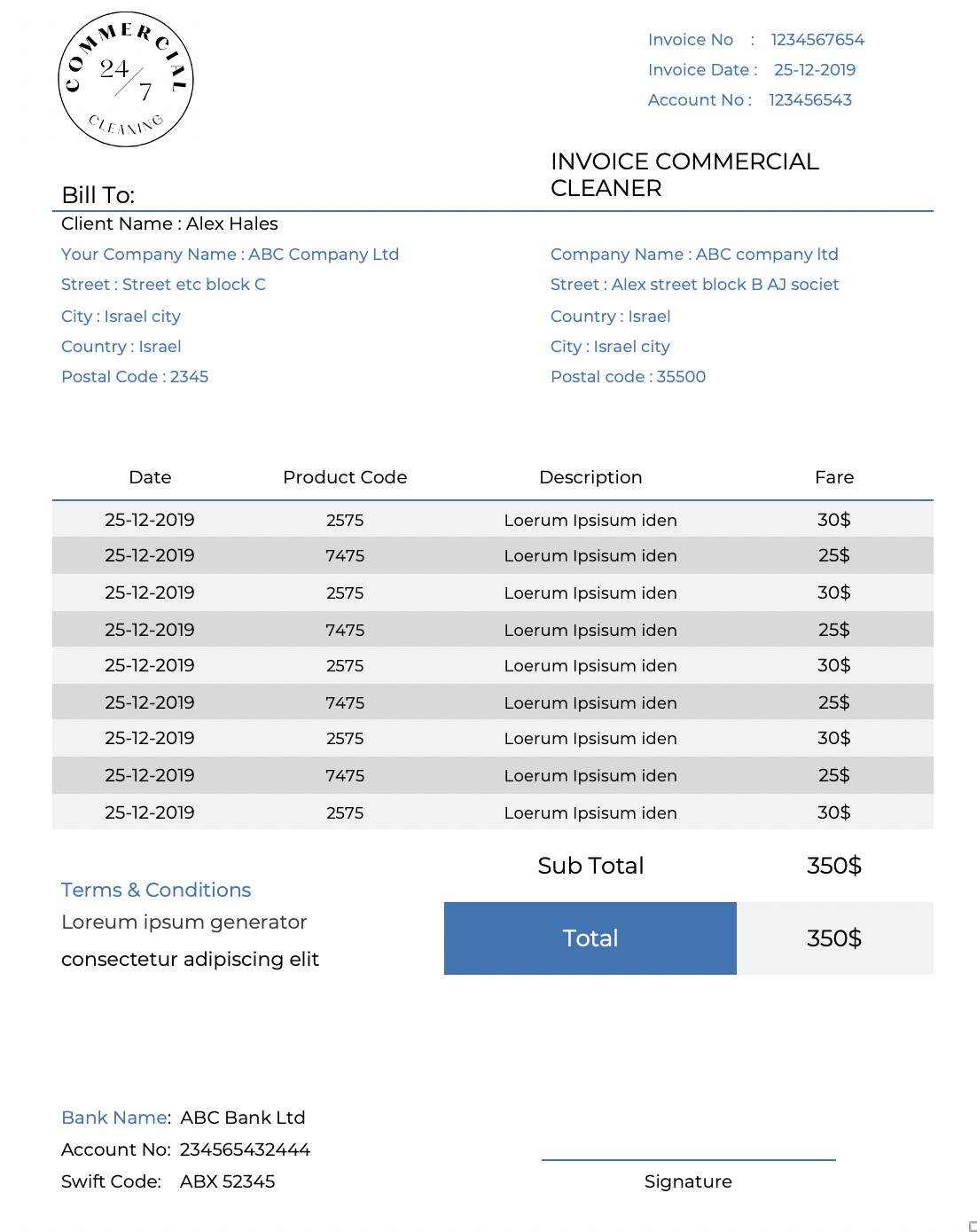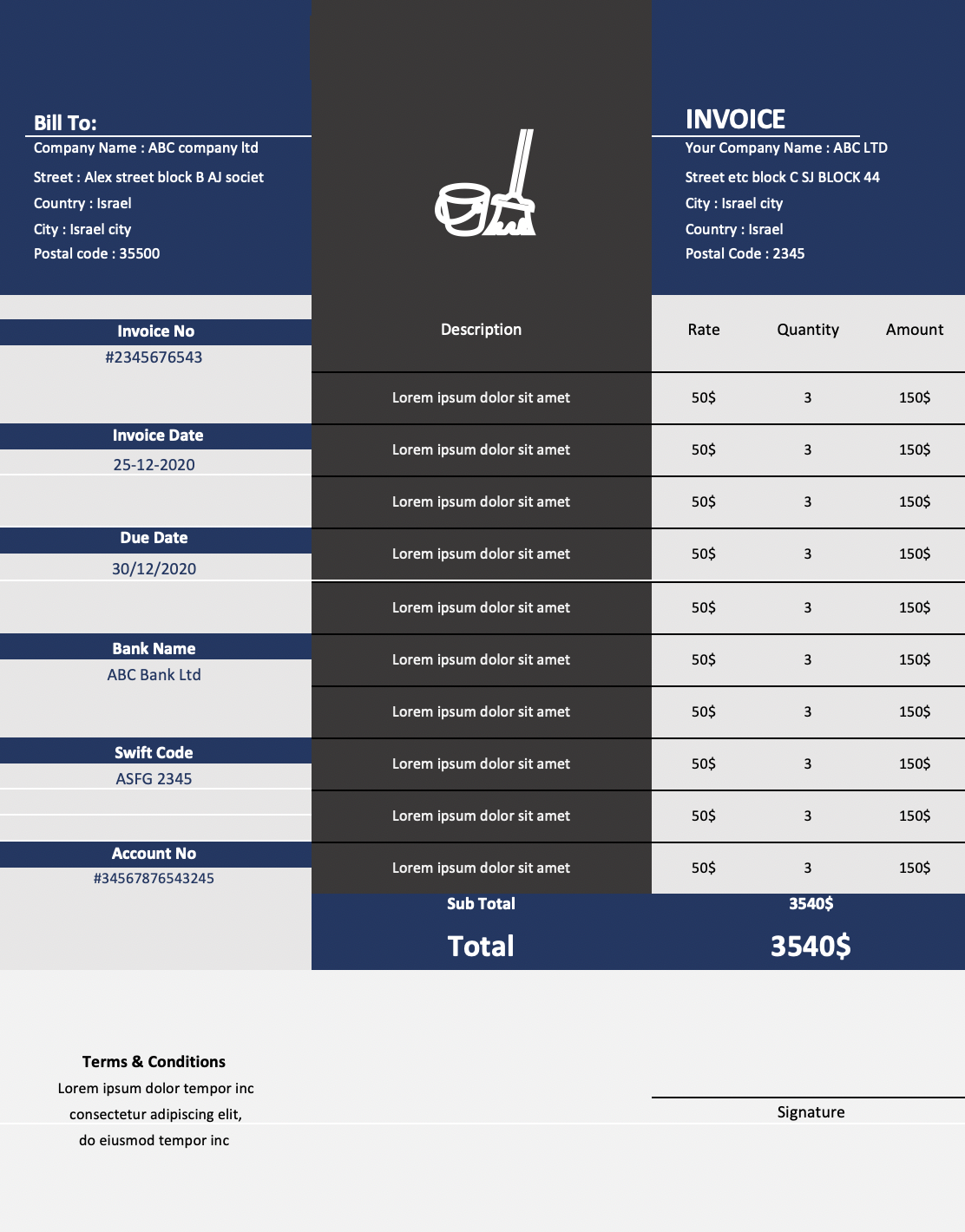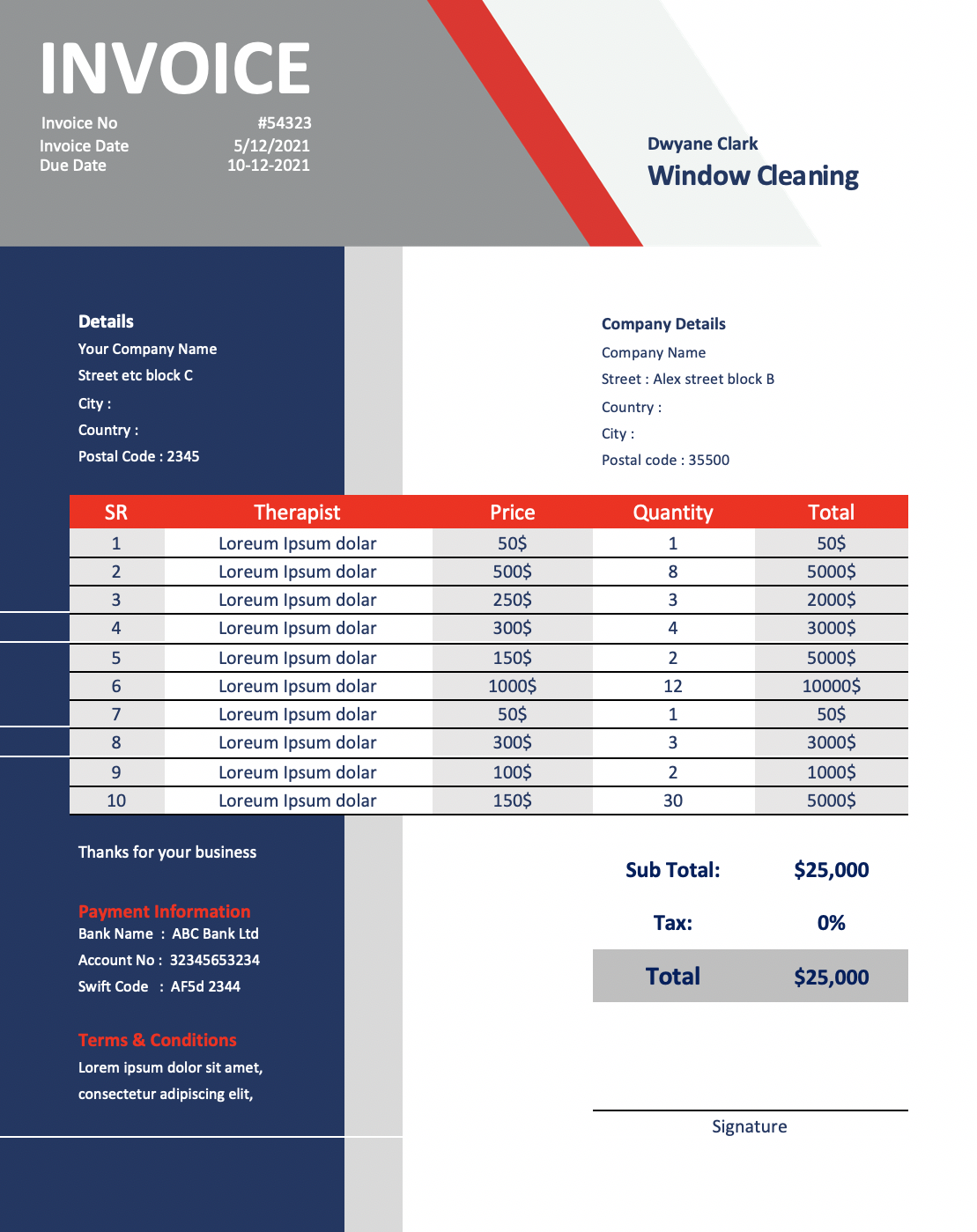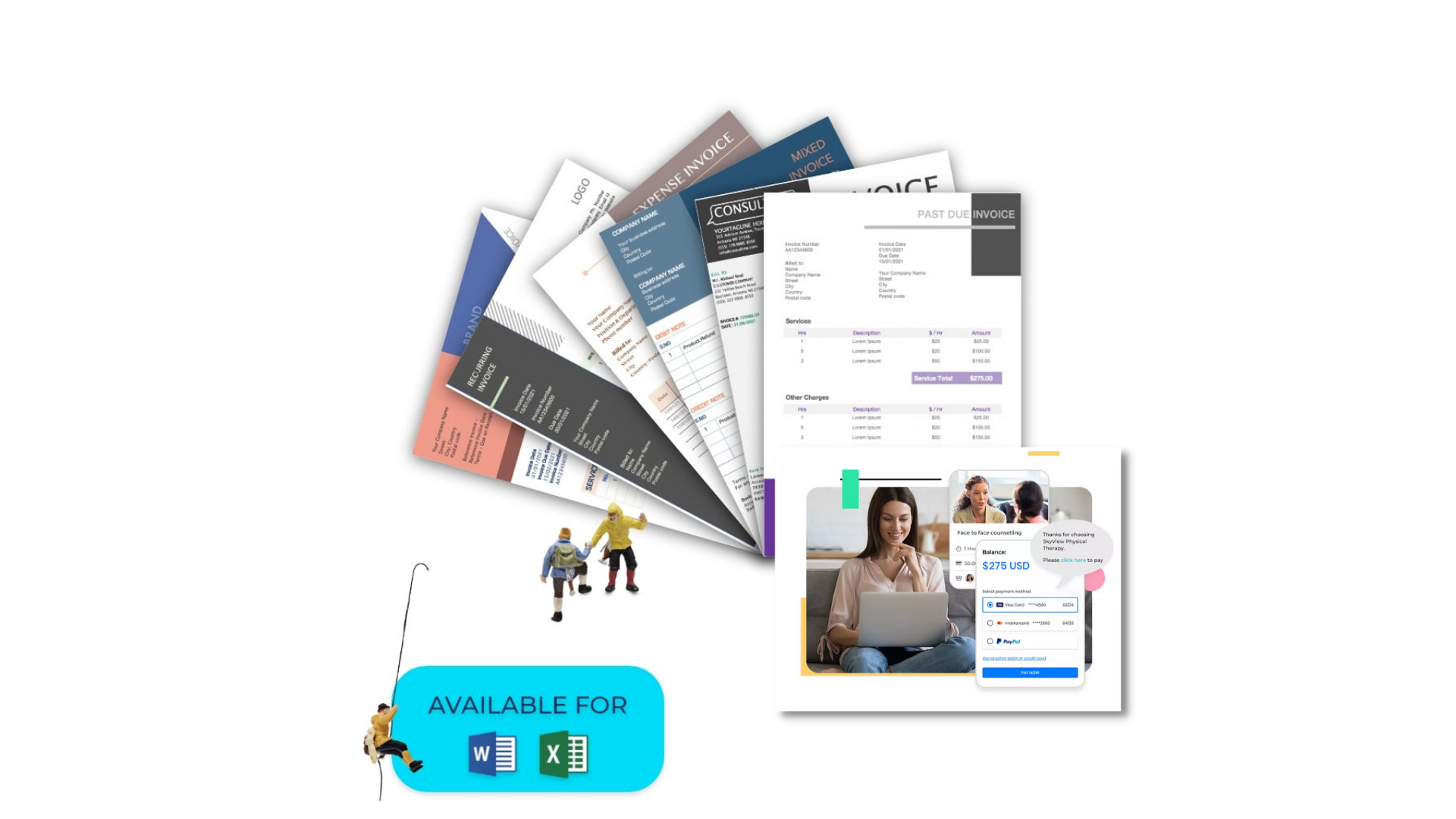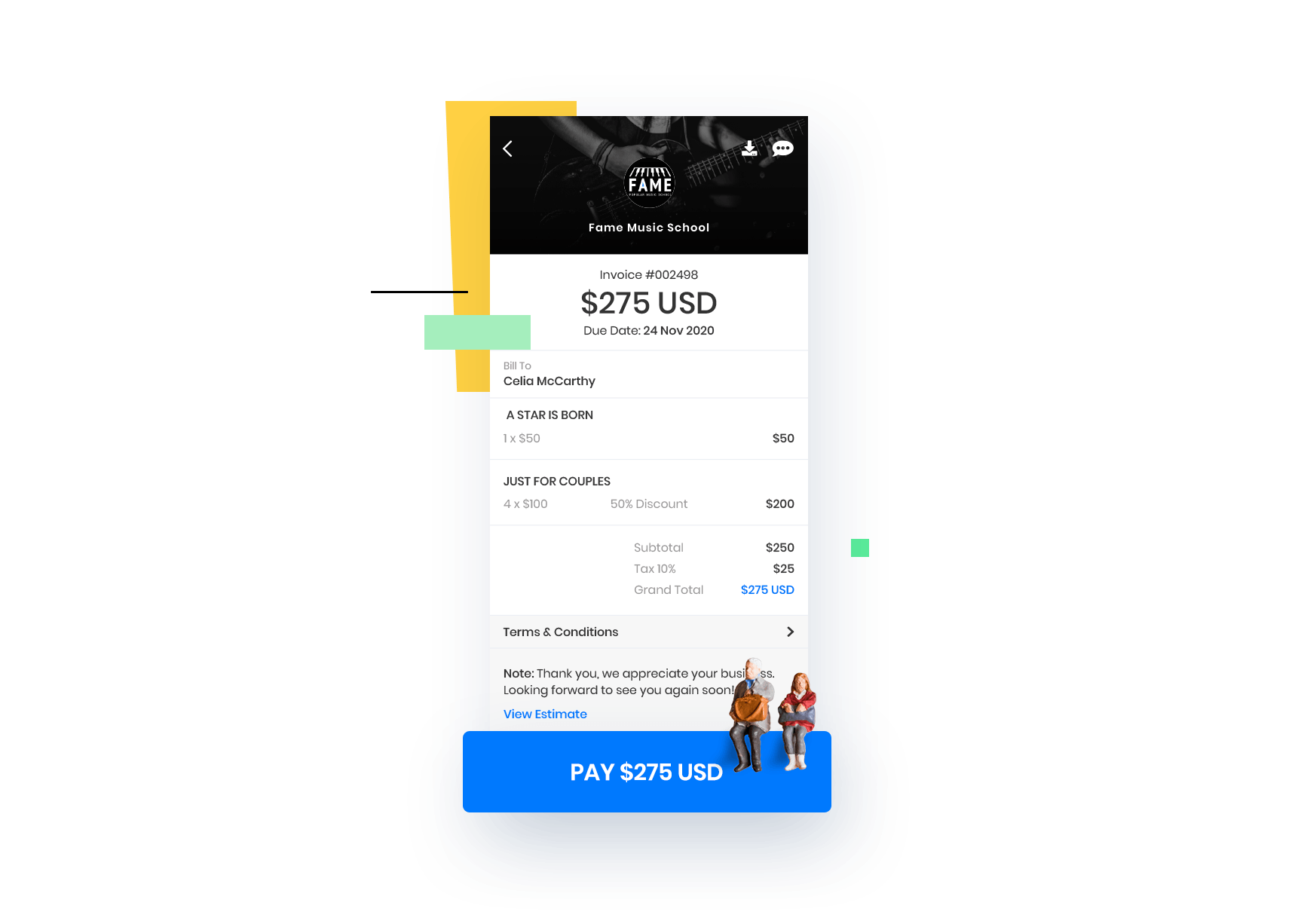Invoice Templates for Therapists
Library of invoice templates customized for therapists
Or start to send invoices by SMS and accept online payments with vcita (Try 14 days free trial)
Library of invoice templates customized for therapists
Or start to send invoices by SMS and accept online payments with vcita (Try 14 days free trial)
This invoice is our one-size-fits-all template for mental health billing, whether you’re billing for a standard therapy session, an ebook, or a corporate workshop. With optional fields for expenses and hourly fees, it’s our most flexible and most customizable invoice template for mental health professionals of all types.
From couples counselling to addictions, working with people to find solutions can be a complex process. Fortunately, our invoice template makes that process easy to bill for. With customizable fields for treatment descriptions, rates, and CPT/ICD codes, you’ll have all you need to bill your clients or insurance companies.
Finding an invoice that’s just right is crucial when you’re offering longer-term treatment. Our psychotherapy invoice template offers space for your credentials and diagnostic numbers, as well as a space for session fees that you can tailor to fit your specialized area of practice.
Capture the precise interventions you’re billing for in this invoice template designed specifically for speech therapists. From phone consultations to session fees, this invoice will help you break down all your service fees for parents and guardians, or for adult clients. There’s also space to include a summary of your recommendations for home treatment.
Occupational therapists need invoices that work both for individual clients and for institutional clients such as schools. Our occupational therapy invoice template includes spaces for diagnostic codes as well as for insurance claim numbers and references to progress notes.
Our invoice template with a GST tax field is designed with Australian psychologists in mind. If you need to charge GST, there’s a space for your GST number in the tax field. This template can work for Canadian psychologists too; just change the GST rate in the template to 5% instead of 10%.
For full list of blank invoice templates click here
Download our invoice templates
Designed for therapists
No matter what template you choose, there are a few basic things that you should always have on your invoices. Like all invoices, therapist invoices should have a unique invoice number, a breakdown of charges, and a clearly defined total. Your contact info should be somewhere on the invoice as well, along with your logo, web address, and the invoice due date. However, there are a few considerations specific to invoicing for therapists. Here are some of the more important ones:
These are often included alongside invoices sent to insurance companies, but sometimes therapists will include brief notes about treatment modalities and progress within invoices as well. This might be a great practice for a therapist billing a parent for their child’s speech therapy, but might be riskier if you’re sending invoices to a parent for their older teen. To be safe, use the Gillman HIPAA method to make sure you’re not violating your client’s confidentiality, especially if your client isn’t the one paying for their treatment.
These are codes required by insurance companies for diagnostic and treatment information. CPT codes are an American standard for categorizing treatment, while ICD codes are an international standard for categorizing illness. Whether or not you need to use them depends on whether you’re billing to individuals or to insurance companies, but it’s good practice to have them, just in case. If your client discovers that their private insurance will pay for therapy after the fact, having those numbers on their invoices may help them get reimbursed.
Along with the invoice due date, it’s important to include the date of the services you’re billing for. Insurance companies will need this information since coverage is often time-bound, but even if your client is paying out of pocket, it’s a helpful way to ensure there’s no dispute about what you’re billing for. This is especially true if you send regular invoices with the same flat fee each time, since they look so similar.
Having a template with your client’s health insurance information can save you a lot of hassle. Instead of having to look up their insurance info every time you bill, put it somewhere on their invoice template. If therapy is the result of an insurance/injury claim, make sure to include the claim number somewhere on the invoice as well. You can even include a hyperlink to each insurance company’s terms of service right on the invoice template, so you can review it any time you need to.
Let your clients know what types of payments you accept—for example, Square, PayPal, bank transfers, or other alternatives to standard payments. Payment terms are especially useful as well, particularly if your payment terms relate to your cancellation policy. For example, many therapists require clients to pay for their session if they cancel less than 24 hours in advance. Having that policy on your invoices at all times can help remind your clients and reduce late cancellations and no-shows.
There’s some finesse involved with invoicing in a therapy practice, particularly if you’re invoicing clients directly. In the midst of some intense personal discussions, you have to send them a document requesting payment—so how do you do it gracefully? Here are a few common questions and answers about the invoicing process:
A lot of therapists charge clients either directly before or directly after a session, and email or print them a copy of an invoice marked “paid” after payment goes through. However, if you have clients on a budget, it can be useful to split up payment for sessions in a way that your clients can afford. For example, if your client sees you once every two weeks, you could offer to send them a weekly recurring invoice instead of a larger one each session.
Regardless of how you charge clients, you should always send them receipts as soon as you can after their payment has gone through. Receipts are basically just a confirmation of payment, formatted much like an invoice. If you’re sending clients an invoice marked “paid” after they have paid you, then your invoice is doubling as a receipt.
They’re important because even if your client isn’t covered by insurance, they may be able to claim some of the cost of therapy on their tax return, provided they have receipts for it. An additional advantage of receipts is that they can serve as your own record of payment confirmation—just attach them to your invoicing document, and you’ll have an ongoing record of which invoices have been paid.
For therapists, the invoicing process is about a lot more than just sending a document. In order to be fully HIPAA compliant, you also have to make sure you’re sending those documents in a way that’s confidential, and storing them securely. Add the extra hassle of managing invoicing deadlines with insurance companies, and invoicing can get complicated.
That’s why it’s generally a good idea to use automated invoicing software, since HIPAA compliant software will help you store and send invoices safely. Automated software can also send receipts and invoices automatically to clients, eliminating the admin work of creating and sending them each time. You’ll be able to track unpaid invoices a lot more easily, making it easier to follow up with clients who are late on payments. With invoice automation, you can also streamline your payment process, making it simpler for clients to pay you and more likely that they’ll pay you on time.
Streamline your payment flow with vcita
Copyright 2025 vcita Inc. All rights reserved.
